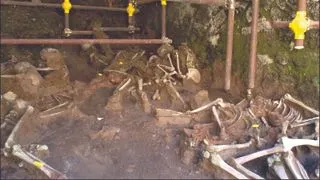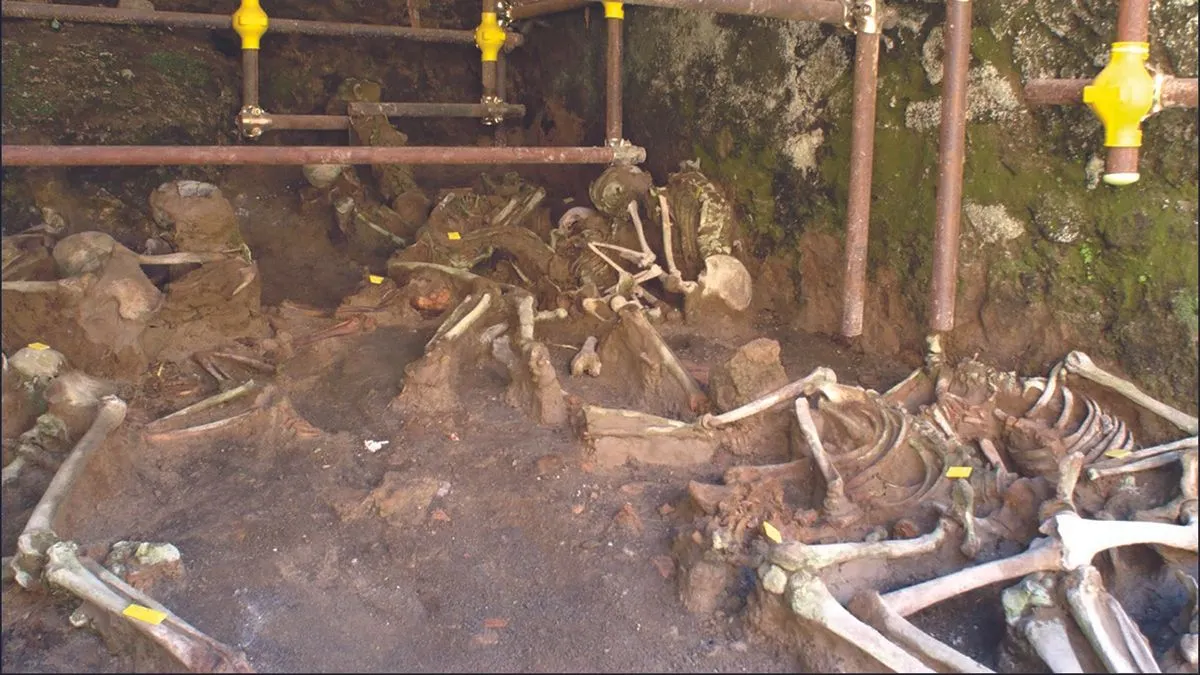Pompeii’s Final Moments: Victims’ Horror Unveiled
The eruption of Mount Vesuvius in 79 AD, which destroyed Pompeii, also decimated the nearby coastal town of Herculaneum. There, dozens of people died more slowly than previously thought, according to a new study.

When Vesuvius erupted, hundreds of Herculaneum residents fled to a nearby beach and perished while trying to escape; some experts had previously concluded that the intense heat of the molten rock, volcanic gases and ash, known as pyroclastic flows, vaporized the victims instantly.
But new evidence from the victims’ bones suggests their fate was grimmer and more prolonged. Researchers estimated that temperatures of the pyroclastic flows were likely low enough that death would not have been instantaneous for people on the beach. Instead, the volcano victims would have died from suffocation from toxic fumes while trapped in oven-like boathouses, researchers recently reported.

Erupting volcanoes spew lava that can burn you, gases that can suffocate you and ash that can bury you. Pyroclastic flows, which do all three, can travel at speeds exceeding 50 mph (80 km/h) at temperatures reaching 1,300 degrees Fahrenheit (700 degrees Celsius), according to the U.S. Geological Survey.
Between 1980 and 2012, archaeologists excavated and examined skeletons belonging to 340 people on Herculaneum’s seafront, on the beach and inside 12 stone boathouses called fornici. A previous investigation of the remains, conducted in 2018, revealed unusual residue, thought to be sprayed bodily fluids, and star-shaped fractures on some of the skulls. The scientists concluded that the pyroclastic flows at Herculaneum were so hot — between 300 and 500 degrees Celsius — that the victims’ blood had boiled and their heads had burst apart, Live Science previously reported.
But other researchers have questioned that conclusion, and a recent analysis of skeletons inside the Fornici told a different story, said study co-author Tim Thompson, a professor of applied biological anthropology at Teesside University in Middlesbrough, United Kingdom.

Human remains in situ preserved inside one of the stone chambers. (Image credit: R. Martyn et al./Antiquity)
Raising the temperature
Exposure to intense heat affects the collagen inside bones and changes the crystalline structure of the bones, Thompson told Live Science. By examining heat-induced changes in the ribs of 152 Herculaneum skeletons found inside the fornici, Thompson and his colleagues discovered the temperatures that caused the damage.
“We can take a piece of bone, run it through our equipment, and predict the temperature and intensity of the burn that that skeleton was exposed to, based on the change in the crystalline structure,” Thompson explained. “So we did. And the results indicated that this was a relatively low-temperature heating event.”

In this case, “low temperature” meant that the pyroclastic flows were no hotter than about 820 F (440 C) at most; meanwhile, cremation studies have previously shown that even temperatures of 1,800 F (1,000 C) are not high enough to vaporize tissue, the study said.
In other words, although the pyroclastic flows at Herculaneum would have been hot enough to kill, they could not have vaporized human flesh on contact, both inside the fornici and on the beach, the researchers reported.
What’s more, 92 percent of the bones they examined had “good collagen preservation,” far more than scientists expected to see in burned bones, Thompson said.
“Here, we had a fairly significant amount of collagen left, which suggests to us that we needed to look for a different mechanism other than direct burning and direct heat,” he said. Based on the state of the bones, they were likely cooked by the heat, rather than burned, the scientists wrote in the study.
The fornici that temporarily housed people fleeing Herculaneum likely heated up like ovens as the boiling mass of volcanic rock and ash roared over them, trapping and suffocating the people inside. Most of the bodies inside the fornici belonged to women and children, while men and teenagers perished on the beach, “trying to drag the boats to escape,” Thompson said.
“Then the pyroclastic flow comes down. And the thing about the fornices is that there is only one way in or out. Once they are covered in debris, what you are left with is something like an oven. There are people trapped in there, no air in or out, it is dark, full of dust and debris. Also, they are stone structures, so they are being heated by the heat of the pyroclastic flow above them,” he explained.
“That presented a new interpretation of how these people died,” Thompson said.






